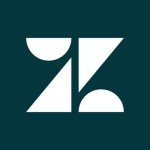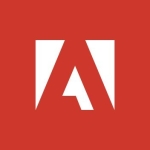We are a remote company at this point. We use it to collaborate on different initiatives within our interior and marketing teams. It's kind of our one-stop-shop to house our collateral and sales information. It covers pretty much anything and everything we need and everything our marketing teams would need as well.
We really like how it organizes everything. I don't know if it's because of the ability to create different pages or not, however, everything is very organized. It's easy to differentiate different materials based on the project and navigate to them. The solution makes it so it's very easy to navigate and very easy to search.
It's extremely intuitive.
The solution is great for non-technical users. You don't have to have a big technological background to work with it effectively. I myself am not very technical and I can get around it without much difficulty.
The UI is good but bland. It could be updated a bit to make it more modern and interesting to look at.
I've only been using the solution since January of 2020, so it's been about six months now.
The stability of the solution is great. There are no issues whatsoever there. I haven't found that it crashes or freezes. There aren't bugs or glitches that affect the way it functions. I would say that it is very consistent and reliable.
I assume the scalability of the solution is good. My company has used it for several years now. We've been growing in that time and we haven't had any kind of stability issues and we've never felt like the solution has gotten too small to meet our needs. It grows with us. We've been able to utilize it as we've needed, as we've grown. It seems to scale nicely.
I've never had a need to reach out to technical support, so I can't speak to the quality of its services.
We also use Salesforce as a project management tool. They aren't really the same, however, we do use the two in tandem.
I don't know what the licensing costs for the solution are at this time.
We're Atlassian customers. I'm just the customer success manager, so I'm not on the technical or the testing side.
I'm not sure which version of the solution we are on, however, I believe it to be the most up to date version that is currently available.
I'd advise other organizations, if they decide to implement the solution, to really utilize it. If you plan to use it as a really strong collaborative tool, ensure that everyone using it has access to the required documents and that they utilize it on a consistent basis. I've found the most benefits from using it when I'm consistent with it. You really need to update it as often as you update your Salesforce. That might mean daily updating, depending on how you use it.
I'd rate the solution eight out of ten. If it had better UI, I might rate it a bit higher.

















We have found this tool to be very valuable in the knowledge creation and capture arena which helps in the onboarding and ramping up of new team members. I agree with some of the comments that you have to put some thought into the creation of Spaces but the organic nature of things is it's real strength and it naturally encourages content creation instead of making it difficult.